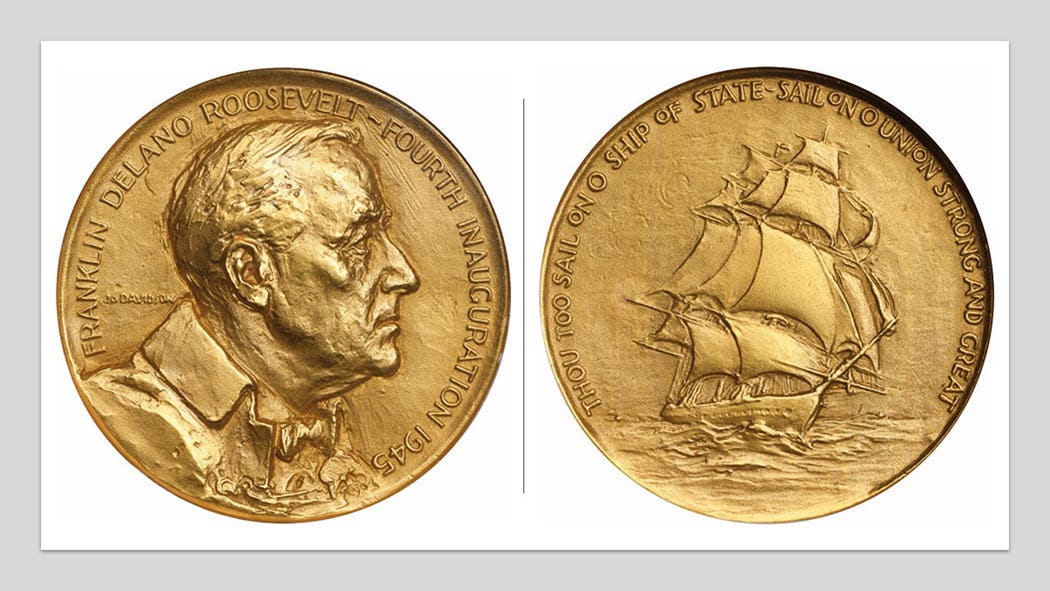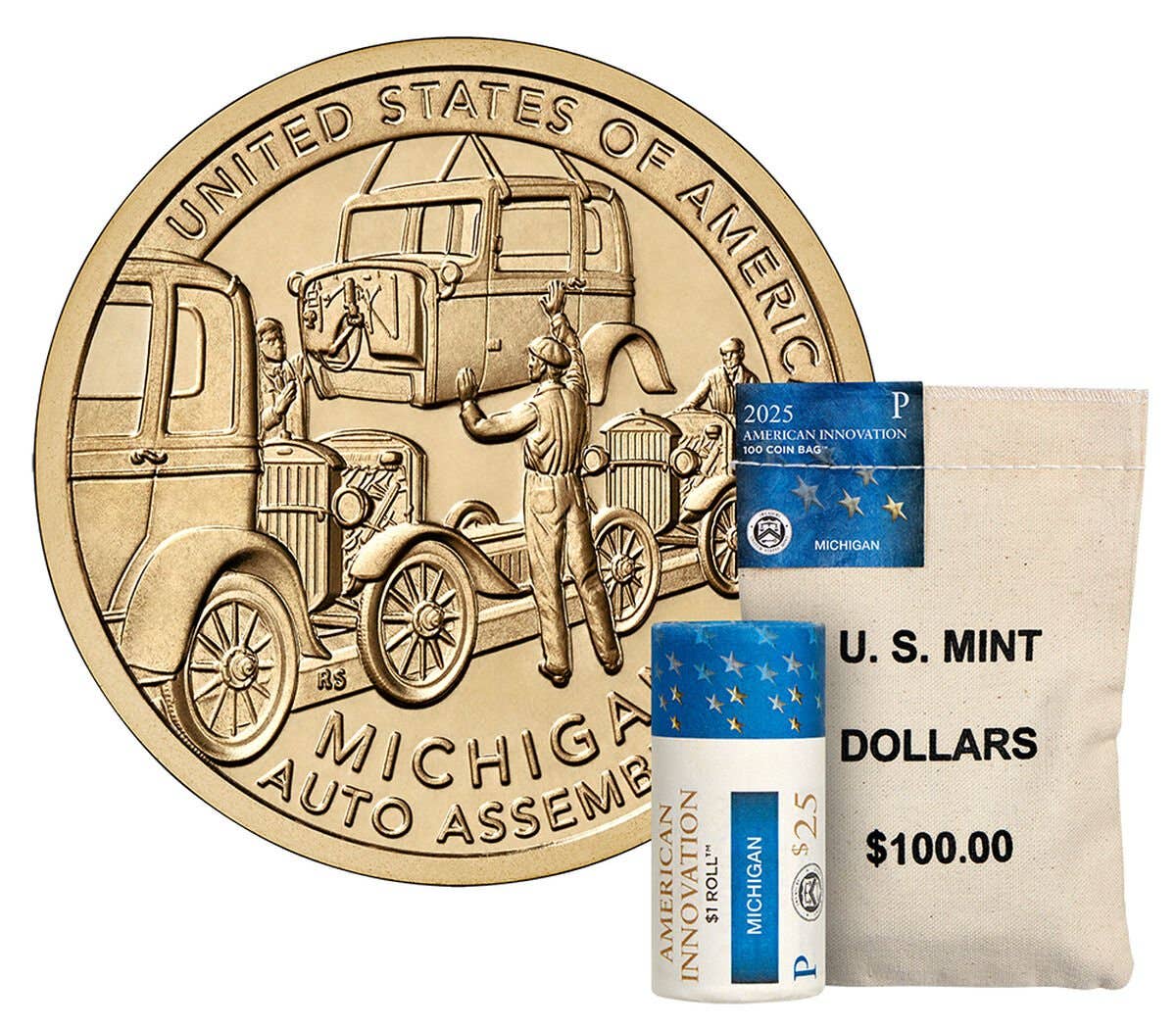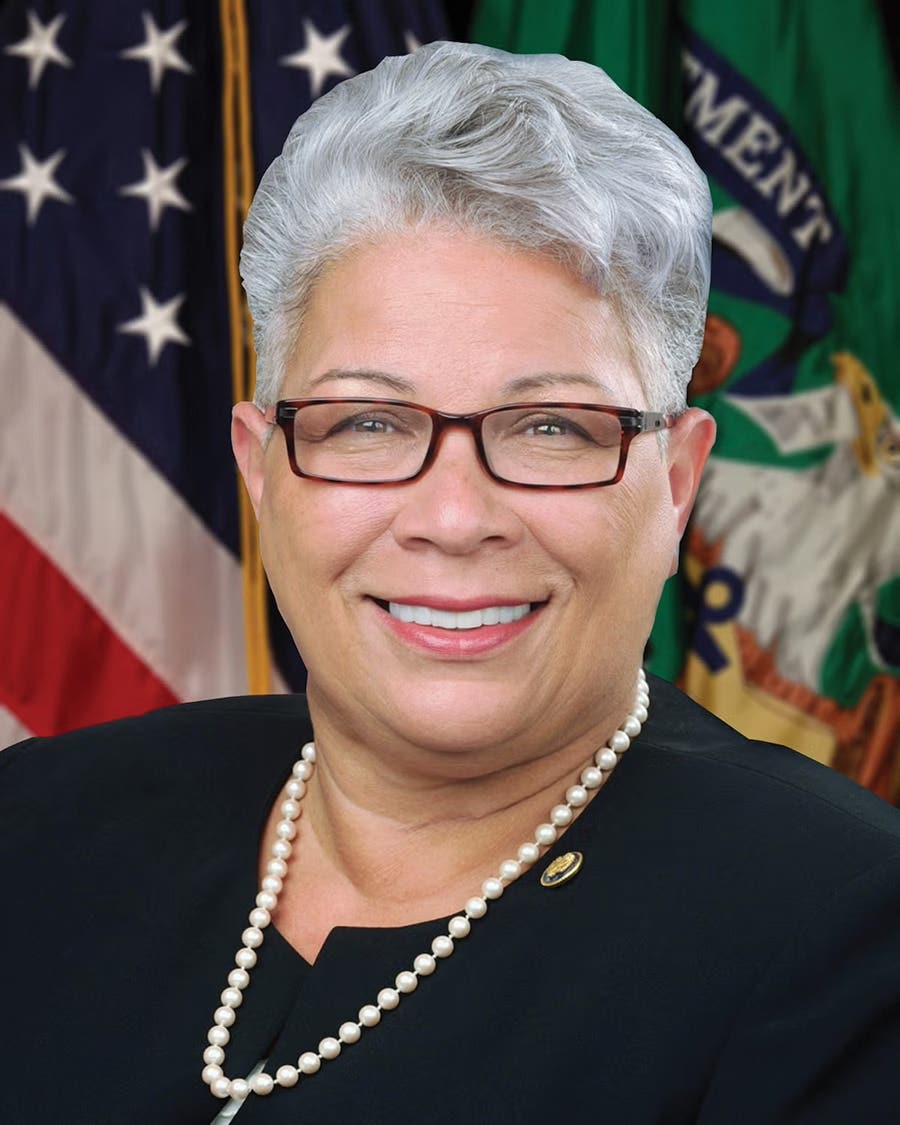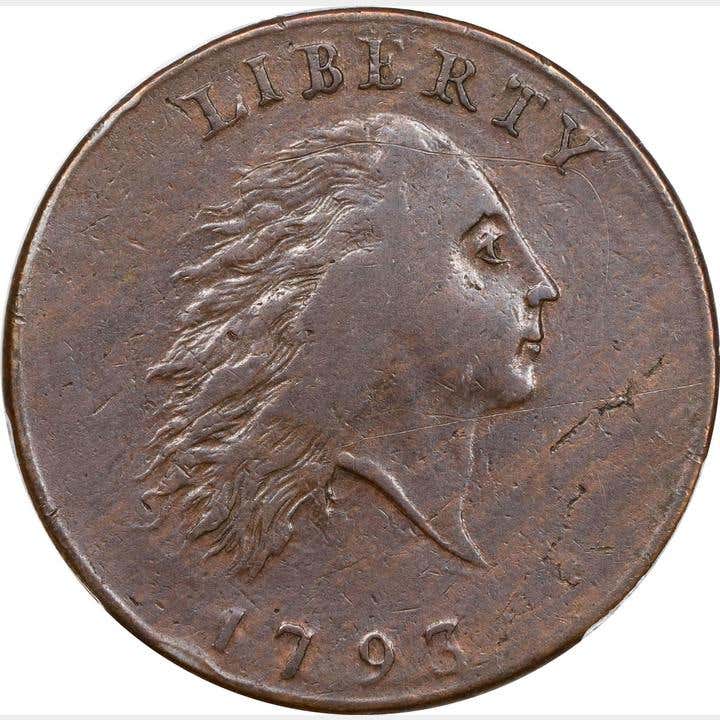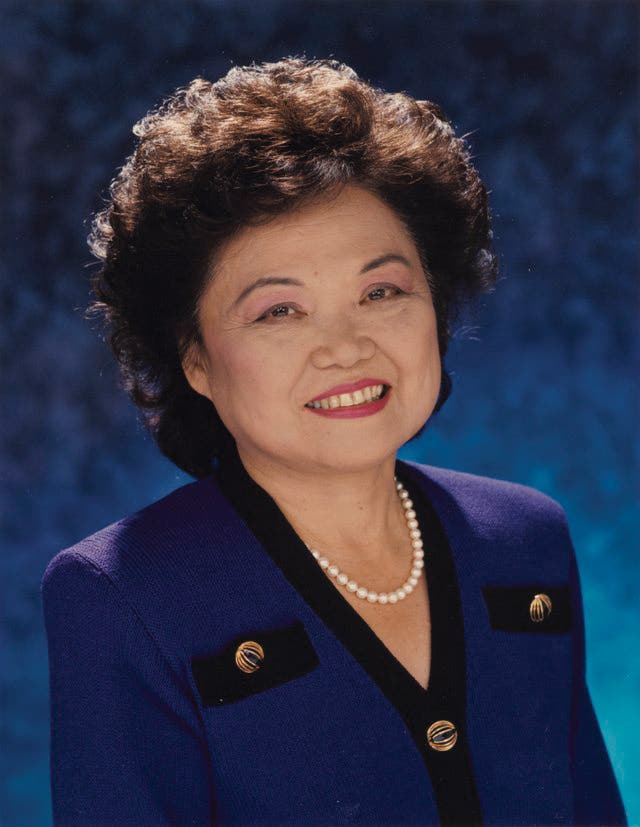CCAC Considers Coin, Medal Designs
Meeting was held by the Citizens Coin Advisory Committee who voted and discussed candidate designs for the 2024 coins and medals.
The Citizens Coin Advisory Committee (CCAC), who advises the Secretary of the Treasury on coin and medal design proposals, held a meeting on April 18. The committee discussed and voted on candidate designs for the following 2024 coins and medals: the Harriet Tubman commemorative coin program, the Greatest Generation commemorative coin program, a Congressional gold medal honoring the Six Triple Eight Battalion, and a Congressional gold medal honoring the servicemembers who perished in Afghanistan on Aug. 26, 2021.
Following is background on the honorees and descriptions of the CCAC-recommended designs.
Harriet Tubman Commemorative
Coin Program
The Harriet Tubman Bicentennial Commemorative Coin Act recognizes the bicentennial of Harriet Tubman’s birth. The act instructs that designs shall be emblematic of her legacy as an abolitionist.
Harriet Tubman was born enslaved as Araminta “Minty” Ross on a Maryland plantation circa 1822. Tubman freed herself from slavery in the fall of 1849 with the help of the Underground Railroad network. Though she had found freedom in Pennsylvania, she braved the perilous journey repeatedly, returning to Maryland 13 times over the next decade to personally guide about 70 more people from slavery to freedom, and provided instructions to approximately 70 additional people who found their way to freedom on their own. Despite laws that put her life at risk and made the journey increasingly dangerous and long, Tubman stated at a women’s suffrage convention in 1896 that she “never lost a passenger” as a conductor on the Underground Railroad.
Harriet Tubman made the connection between her work leading people to freedom and the efforts of the Union Army during the U.S. Civil War. She joined the Union Army as a nurse in 1862 and served in multiple roles, including as an Army scout and spy for military leaders who recognized her abilities. Tubman proved an exceptional leader, recruiting newly freed men into regiments of African American soldiers, and distinguishing herself as the first woman to lead an armed expedition in the Civil War, the Combahee River Raid, resulting in more than 700 enslaved people in South Carolina being freed.
After the Civil War, Harriet Tubman spent the rest of her life, 54 years, living in the abolition stronghold of Auburn, N.Y. There, Tubman remained resolute in the causes she fought for and continued to work to provide the means necessary to care for newly freed enslaved people, including the young and elderly. Whether working her farm at her 32-acre homestead or giving speeches in support of women’s suffrage, civil rights and access to health care – not only for African Americans but also for all people – Tubman was a visionary, a leader and a beacon for liberty. Her life was characterized by her unwavering determination and active pursuit of freedom in every aspect of American life.
Candidate designs for this program were developed with three periods of Tubman’s life and work in mind. Silver dollar designs reflect her work as a conductor on the Underground Railroad, half dollar designs represent her work during the Civil War and the $5 gold coin looks at her life after the Civil War and into her later years.
Surcharges for this program are authorized to be paid to the National Underground Railroad Freedom Center in Cincinnati, Ohio, and the Harriet Tubman Home, Inc., in Auburn, N.Y., for the purpose of accomplishing and advancing their missions. The U.S. Mint worked with representatives of the National Underground Railroad Freedom Center and the Harriet Tubman Home in developing the design portfolio.
The designs all include the required inscriptions: “Harriet Tubman,” “Liberty,” “In God We Trust” and “2024” on the obverse and “United States of America,” “E Pluribus Unum” and the denomination on the reverse.
The CCAC-recommended design for the silver dollar obverse depicts Harriet Tubman offering her hand to the viewer. Harriet’s serious and searching expression, with concerted eye contact, challenges the viewer to seize the opportunity for freedom. The recommended design for the silver dollar reverse features silhouettes travelling across a bridge created by a pair of clasping arms. In the sky above, the Big Dipper constellation points to the North Star, which forms the “O” in “OF.”
The recommended design for the clad half dollar obverse depicts Harriet Tubman. In the background, two Civil War-era boats represent the Combahee River Raid. Tubman distinguished herself as the first woman to lead an armed expedition in the Civil War. The chosen reverse design features Harriet Tubman holding a spyglass, symbolic of her work as a scout and a spy for the Union Army during the U.S. Civil War. A row of Civil War-era tents line the horizon. Additional inscriptions include “CIVIL WAR,” “NURSE,” “SCOUT,” “SPY” and “COMBAHEE RIVER RAID LEADER.”
The recommended design for the gold coin obverse portrays Harriet Tubman in her years after the Civil War. The reverse depicts a two-handed gesture symbolizing Harriet Tubman’s efforts throughout her life to help and care for people. It also includes Harriet Tubman’s seven core values, passed down from generation to generation. Those are “FAITH,” “FREEDOM,” “FAMILY,” “COMMUNITY,” SELF-DETERMINATION,” “SOCIAL JUSTICE” and “EQUALITY.”
Greatest Generation Commemorative Coin Program
The Secretary of the Treasury is to mint and issue $5 gold coins, $1 silver coins and half dollar clad coins emblematic of the World War II Memorial and the service and sacrifice of American soldiers and civilians during World War II.
The National World War II Memorial honors the 16 million who served in the armed forces of the United States, the more than 400,000 who died and all who supported the war effort from home by joining the workforce, increasing factory and farm outputs, planting “victory gardens” and through rationing. The memorial opened to the public on April 29, 2004, and was dedicated one month later. It is located on the National Mall in Washington, D.C.
Symbolic of the defining event of the 20th century, the memorial is a monument to the spirit, sacrifice and commitment of the American people to the common defense of the nation and to the broader causes of peace and freedom from tyranny throughout the world. The memorial is meant to inspire future generations of Americans, deepening their appreciation of the World War II generation’s accomplishments in securing freedom and democracy. Above all, the memorial stands as an important symbol of American national unity, a timeless reminder of the moral strength and awesome power that can flow when a free people are at once united and bonded together in a common and just cause.
Surcharges for this program are authorized to be paid to the Friends of the National World War II Memorial to support the National Park Service in maintaining and repairing the World War II Memorial, and for educational and commemorative programs. The Mint worked with a representative of the Friends of the National World War II Memorial in developing the design portfolio.
The designs all include the following required inscriptions: “Liberty,” “In God We Trust” and “2024” on the obverse and “United States of America,” “E Pluribus Unum” and the denomination on the reverse.
The recommended gold coin obverse design depicts the Wall of Stars at the World War II Memorial with an olive branch and the additional inscription “WORLD WAR II MEMORIAL.” The chosen reverse design depicts a folded flag with the additional inscriptions “WWII MEMORIAL” and “TO UNITE THE GENERATIONS OF TOMORROW.”
The recommended design for the obverse of the silver coin features an allegorical tableau of figures supporting a globe. Each figure represents a branch of the U.S. Armed Forces during WWII (Air Force, Coast Guard, Navy, Army and Marine Corps) plus a figure representing the critical work of the Merchant Marines. It includes the inscriptions “WORLD WAR II MEMORIAL,” “1945-1945” and “DEFENDERS OF FREEDOM.” The chosen reverse design depicts a view from beneath a baldacchino, a sculptural canopy, inside a victory pavilion in the World War II Memorial featuring four eagles holding a laurel wreath. Inside the wreath is a globe centered on the Pacific Ocean. The additional inscriptions are “VICTORY,” “IN THE AIR,” “AT SEA,” and “ON LAND.”
For the obverse of the clad half dollar, CCAC members voted to use a design submitted for the silver dollar. It features a reimagining of the figure of Liberation on the World War II Victory medal, awarded to all who served in the Armed Forces during the war. The additional inscriptions are “WORLD WAR II” and “THEY ANSWERED THE CALL.” The committee is recommending that the inscription be revised to “WE ANSWERED.”
The recommended reverse design depicts the World War II Memorial from the point of view of a person walking up a ramp leading to one of the towers.
Six Triple Eight
Congressional Gold Medal
A Congressional gold medal will be awarded to the members of the Women’s Army Corps who were assigned to the 6888th Central Postal Directory Battalion, known as the Six Triple Eight.
During WWII, warehouses in Birmingham, England, were filled with millions of letters and packages intended for U.S servicemembers in Europe. The servicemembers noticed that they were not receiving mail from home, and Army officials reported that the lack of reliable mail was hurting morale. As Allied forces drove across Europe, the ever-changing locations of servicemembers hampered mail delivery. Army officials reported that the personnel shortage resulted in millions of pieces of undelivered mail and packages sitting in warehouses across the region. Army officials predicted that it would take six months to restore mail delivery to the troops.
On July 1, 1943, the Women’s Army Corps (WAC) was created by a law signed by President Roosevelt. First Lady Eleanor Roosevelt and civil rights leader Dr. Mary McLeod Bethune successfully advocated for the admittance of African American women as enlisted personnel and officers in the WAC, though in the rest of the Army, racial segregation prevailed.
In November 1944, a battalion of 817 (later 824) enlisted personnel and 31 officers of African American women volunteers drawn from the WAC, the Army Service Forces and the Army Air Forces were selected for overseas assignment. This unit was designated as the 6888th Central Postal Directory Battalion, nicknamed “Six Triple Eight.” Major (later Lieutenant Colonel) Charity Edna Adams was chosen as the newly formed unit’s battalion commander.
While stationed in Birmingham, working in austere wartime conditions, and segregated by gender and race, Major Adams devised an efficient 24-hour mail processing system for the 6888 to route approximately 65,000 pieces of mail per eight-hour shift. Based on processing approximately 195,000 pieces of mail per day, the 6888 cleared the over-17,000,000 mail and package backlog in three months, well ahead of the Army’s six-month goal. After mission success in Birmingham, the 6888 relocated to Rouen and Paris, France, and cleared those mail backlogs, some undelivered mail dating back as far as three years. While in France, the 6888 suffered a tragic loss when three of its members were killed in a crash, and were buried at Normandy, funded by the other members of the 6888.
On March 2, 1946, the last members of the 6888 boarded a transport ship in France for return to the United States. There was no parade or any recognition for the important work done by the battalion until they received the Meritorious Unit Commendation from the Army in 2019. The motto of the 6888 was “No Mail, Low Morale,” reflecting the critical contributions made by the unit to increase the morale of all United States personnel stationed in the European Theater of Operations during WWII.
The recommended obverse design depicts Major Charity Adams next to a row of members from the 6888. A partial exergue is created by an envelope inscribed with “WOMEN’S ARMY CORPS,” “2/12/1945 – 3/2/1946” and “ACT OF CONGRESS 2022.” The additional inscription is “6888th CENTRAL POSTAL DIRECTORY BATTALION.”
The recommended reverse design depicts a member of the 6888 filing mail to be sent out to American soldiers. Behind her, members of her battalion are sorting and addressing mail to the troops. They work in a warehouse filled to the ceiling with unsorted mail. The additional inscriptions are “ENGLAND,” “FRANCE,” and “NO MAIL, LOW MORALE.”
Congressional Gold Medal to the Servicemembers Who Perished in Afghanistan on August 26, 2021
A congressional gold medal will be awarded to the servicemembers who perished in Afghanistan on August 26, 2021, during the evacuation of United States citizens and Afghan allies at Hamid Karzai International Airport.
At 9:44 a.m. on Aug. 26, 2021, an explosion occurred at the airport, later confirmed to be a suicide bombing by the ISIS-K terrorist group. Estimates as high as 200 deaths were reported, including 13 United States servicemembers; hundreds more were wounded. Aug. 26 was the deadliest single day of the war in Afghanistan for the United States in more than a decade.
The servicemembers who were killed have been identified as Maxton Soviak, Kareem Nikoui, David Espinoza, Rylee McCollum, Jared Schmitz, Hunter Lopez, Taylor Hoover, Daegan William-Tyeler Page, Nicole Gee, Humberto Sanchez, Dylan Merola, Johanny Rosario Pichardo and Ryan Knauss. These brave men and women served in the United States Marine Corps, Army and Navy and were posthumously awarded the Purple Heart.
These American servicemembers went above and beyond the call of duty to protect U.S. citizens and our allies during the extremely dangerous situation as the Taliban regained control over Afghanistan. They exemplified extreme bravery and valor against armed enemy combatants. They dedicated their lives, and their heroism deserves great honor.
In developing the designs, the Mint worked with congressionally designated representatives from the American Gold Star Mothers, the Gold Star Wives and the Special Operations Association of America.
The recommended obverse design depicts five servicemembers in silhouette standing over a crowd of people waiting to board a C-17 with the mountains of Kabul in the background. There are 13 stars incused over their heads, representing the 13 fallen. It is the preferred obverse of all three liaisons.
The recommended reverse design features the names of the fallen servicemembers and an American flag surrounded by a wreath. This is the preferred design of all three liaisons.




